Paths bordered by vibrant flower beds can turn the most ordinary lawn into a landscape that feels personal, resilient, and alive. Over the past year designers have leaned into beds that do more than decorate: they feed pollinators, withstand drought, and even invite children to explore with all five senses. Reports on emerging garden trends note a shift toward materials that cut maintenance—such as sleek metal edging—and themes that reflect climate realities, like Mediterranean gravel or bee-friendly lawns. These twenty flower bed ideas distill that creative momentum into practical, adaptable concepts you can start planting this weekend.
1. Raised Wooden Flower Bed for Effortless Maintenance
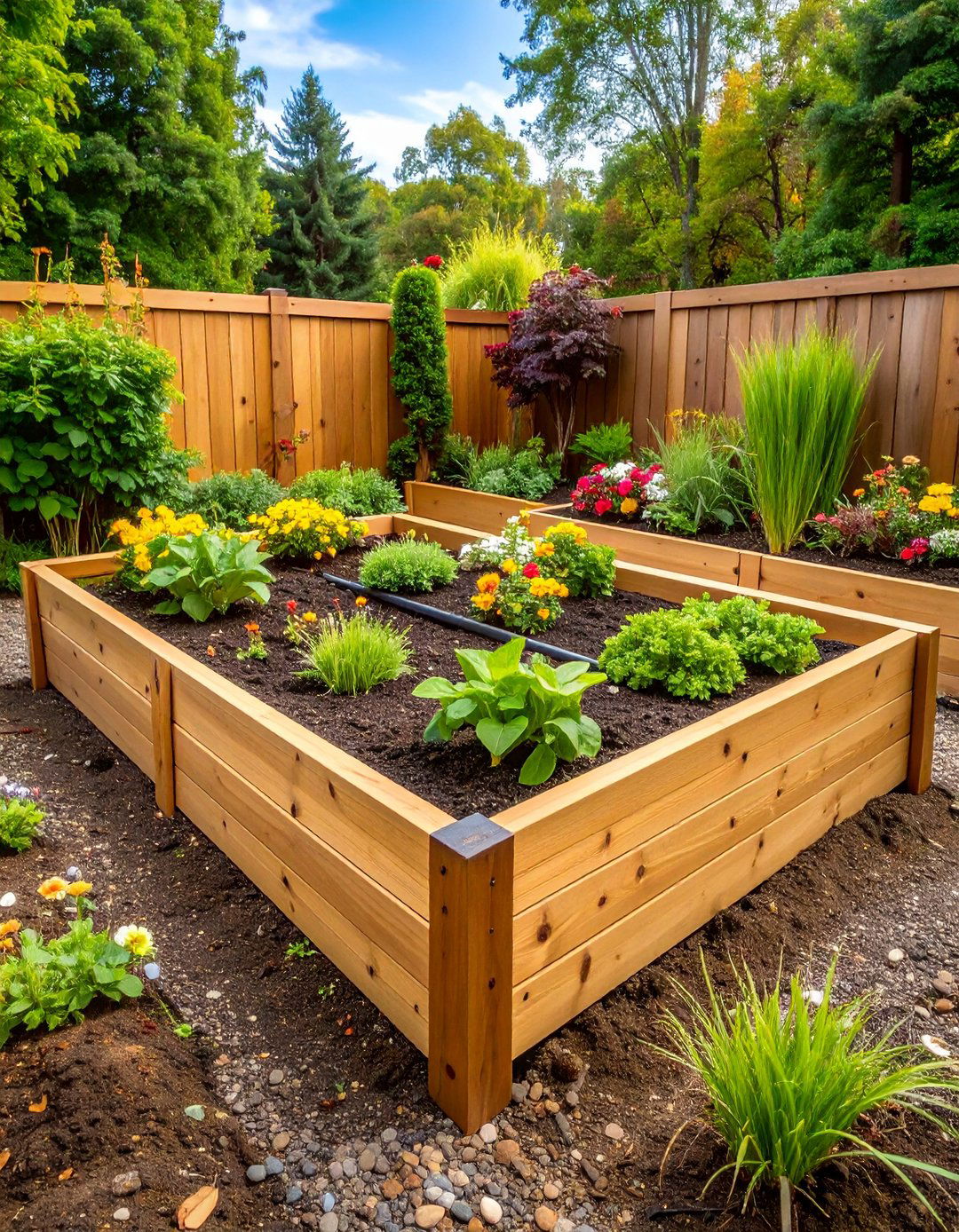
A raised wooden flower bed instantly elevates both soil and style, giving roots the deep, loose growing mix they crave while sparing your own back. Studies of home gardens show that beds lifted 12–18 inches warm sooner in spring and drain faster after heavy rain, extending the planting window and preventing root rot. Because the timber sides define clear edges, weeds have fewer pathways in and it becomes simple to top-dress with compost each season. Choose rot-resistant cedar or recycled plastic boards, line the base with cardboard to smother turf, and fill with equal parts topsoil, compost, and coarse sand for a fertile, crumb-free medium. Add drip irrigation before planting to keep maintenance truly minimal.
2. Pollinator-Friendly Native Flower Bed

Consider a pollinator-friendly native flower bed if you want nonstop movement from bees, butterflies, and hummingbirds. Ecologists recommend the simple 3-by-3-by-3 formula: plant three native species that bloom in spring, three in summer, and three in fall so nectar is always on tap. Complement that rhythm by grouping plants in bold drifts—coneflowers beside asters beside goldenrods—mirroring native prairie patterns that pollinators recognize at flight speed. Because natives evolved with local soils and rainfall, they require less fertilizer and irrigation once established. Mulch lightly to control weeds but leave some bare earth for solitary ground-nesting bees, and skip pesticides entirely; the balanced insect community will patrol for you.
3. Overflowing Cottage-Style Flower Bed Border
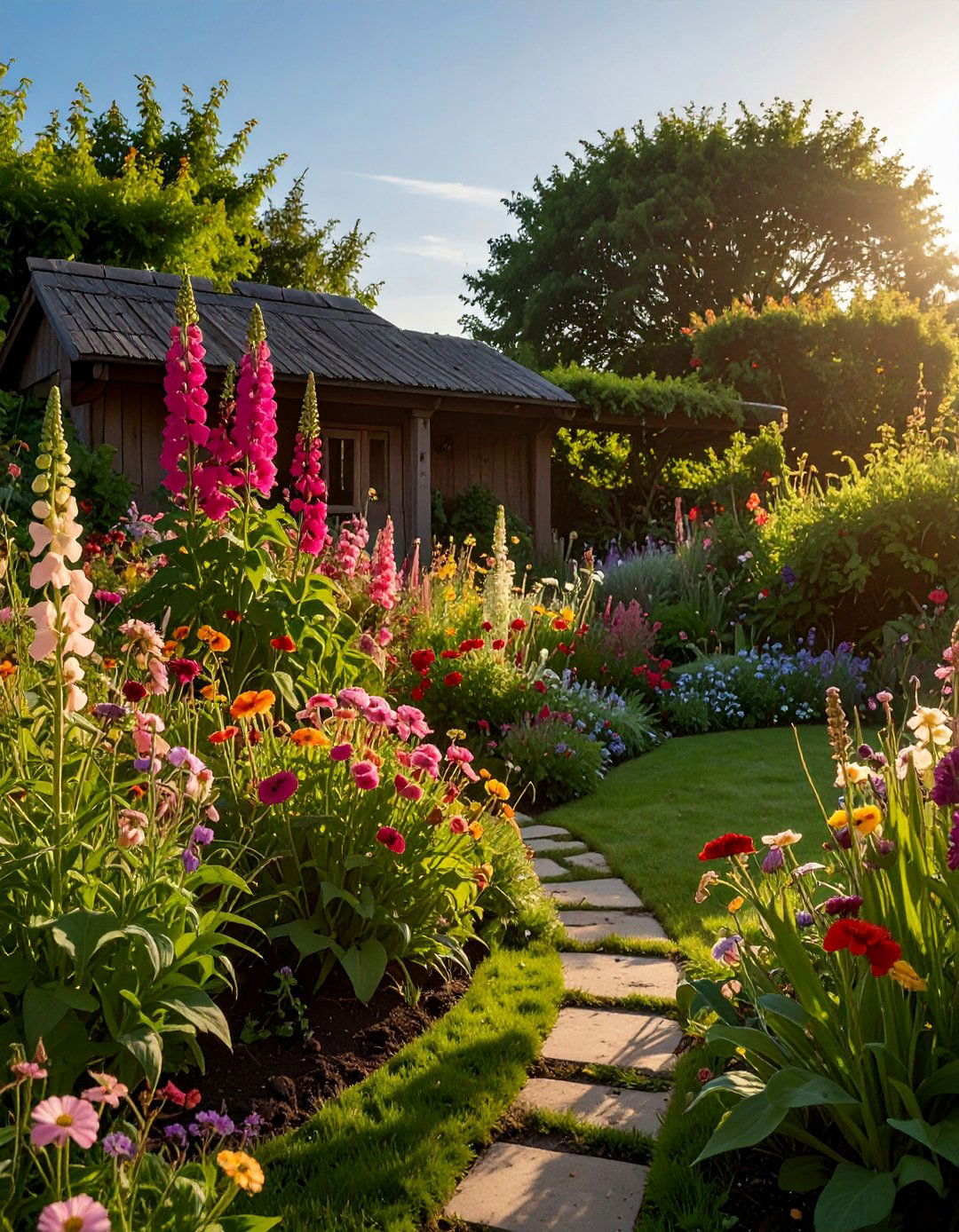
Nothing says welcome like a cottage-style flower bed spilling over its own edges in a riot of color and scent. Layer tall hollyhocks or delphiniums at the back, then weave mid-height foxgloves and fragrant herbs such as rosemary and feverfew through the middle, finishing with low nasturtiums or alyssum that soften the path. Mixing annuals with stalwart perennials ensures something is always blooming, while repeated clusters of similar hues tie the wildness together. Let plants self-seed where they please; the gentle chaos is part of the charm. Shredded leaf mulch between clumps keeps soil cool and discourages weeds without spoiling the informal look.
4. Monochrome Color-Themed Flower Bed
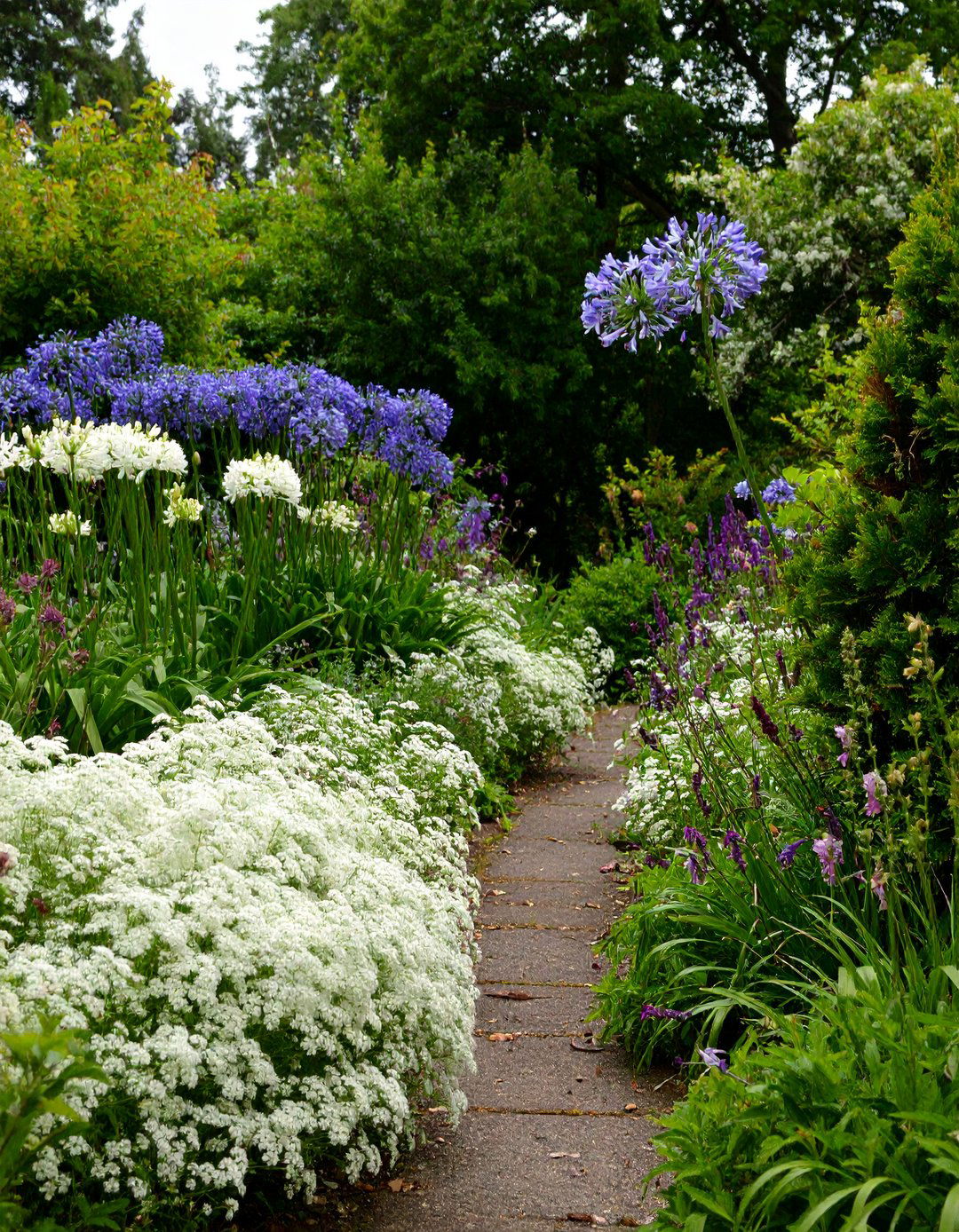
For bold simplicity, design a monochrome flower bed that celebrates a single hue from bud to leaf to stem. Garden designers note that choosing plants with varied textures—think frothy baby’s-breath beside spiky agapanthus—all in shades of white, purple, or yellow prevents the scheme from feeling flat. Picking one dominant color also streamlines maintenance: any off-color volunteer is instantly obvious and easy to pull. To deepen the effect, echo the palette in nearby pots or path gravel, and include foliage plants such as silvery artemisia or burgundy heuchera for contrast that won’t break the color rule. At dusk the cohesive palette glows, making small spaces feel larger.
5. Night-Scented “Moonlight” Flower Bed

A night-scented flower bed—sometimes called a moonlight garden—turns evening breezes into perfume when daytime blooms have closed. White or pale petals like those of Nicotiana, angel’s trumpet, and night phlox reflect moonbeams, while their volatile oils intensify fragrance after sunset. Place the bed near a patio or open window so scent drifts indoors, and choose a silver mulch such as crushed shells or pale gravel to magnify low light. Because many evening bloomers hail from the subtropics, ensure well-drained soil and regular feeding. Adding solar stake lights at knee height helps showcase silhouettes without disrupting nocturnal pollinators. Finally, a small water bowl amplifies reflection.
6. Layered Perennial Flower Bed for Year-Round Texture
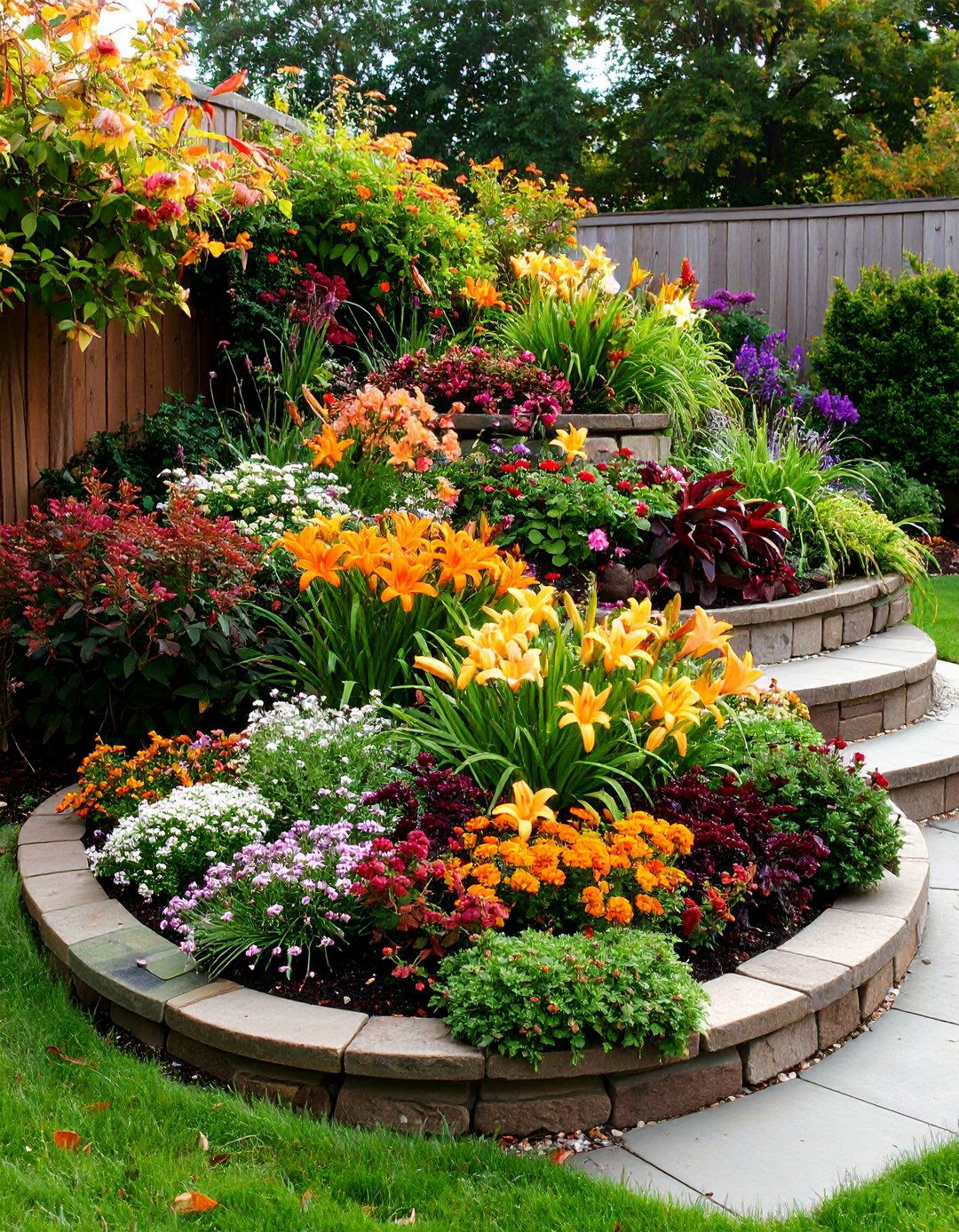
Building a layered perennial flower bed is like composing a symphony that plays through all four seasons. Designers suggest arranging plants in vertical tiers—groundcovers, knee-high fillers, midsize shrubs, and punctuation spikes—so no bare soil shows and visual interest shifts rather than disappears. Pair early bulbs such as crocus with summer daylilies and autumn sedum to bridge bloom gaps, and tuck evergreen hellebores for winter structure. Each layer shades the root zone of the next, reducing water loss and suppressing weeds. After the first frost, leave seed heads standing; finches relish them and frosty silhouettes sparkle against morning sun. Mulch lightly with shredded bark for cohesion.
7. Butterfly-Shaped Flower Bed Layout
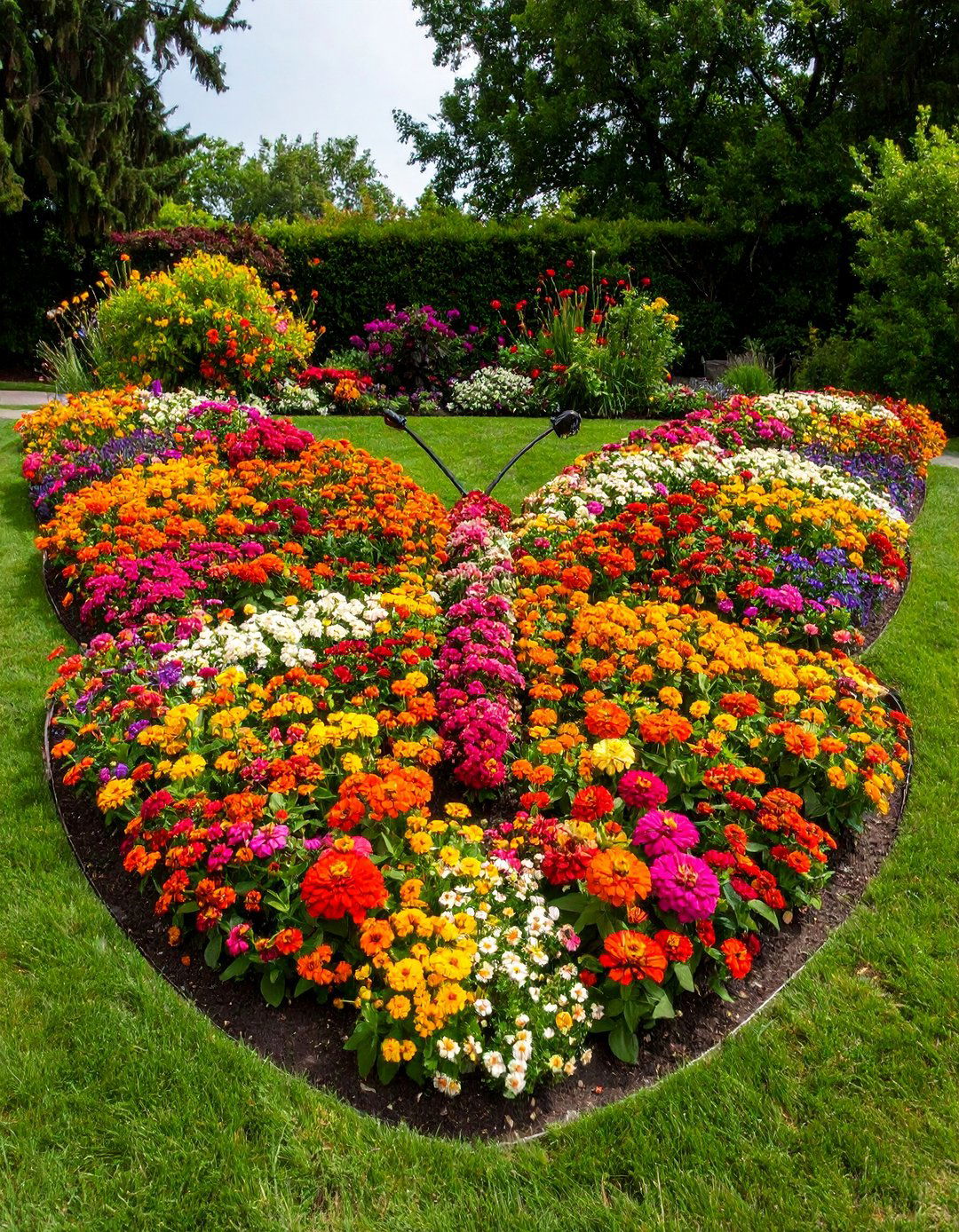
Shaping an entire flower bed like a butterfly delights children and signals to actual butterflies that a feast awaits. Start by outlining two large kidney-shaped wings in opposite corners of a sunny patch, leaving a narrow grass walkway down the middle to suggest the body. Guides to butterfly gardens recommend planting nectar-rich zinnias and lantanas in the wing tips and host plants such as milkweed and parsley nearer the center so caterpillars stay protected. Keep colors mirrored left and right to reinforce the motif and edge the curves with low alyssum for definition. Even small urban yards can spare the eight-by-five-foot footprint needed for this whimsical sanctuary.
8. Rock Garden Alpine Flower Bed

A rock garden alpine flower bed thrives where other plantings struggle, turning thin, gritty soil and full sun into a jewel box of miniature blooms. Alpine societies highlight low-growing cushions like aubrieta, basket-of-gold, and dwarf dianthus that carpet boulders in spring, followed by tufts of blue fescue and sedum for summer texture. Beginners succeed fastest by selecting no-fuss alpines such as sempervivum and saxifraga, which tolerate both drought and frost. To build the bed, mound rubble and coarse sand to create sharp drainage, then nestle stones partially into the slope so roots stay cool. Water deeply once a week until plants knit together, then leave them to sip only natural rainfall.
9. Xeriscape Native Flower Bed for Drought Defense
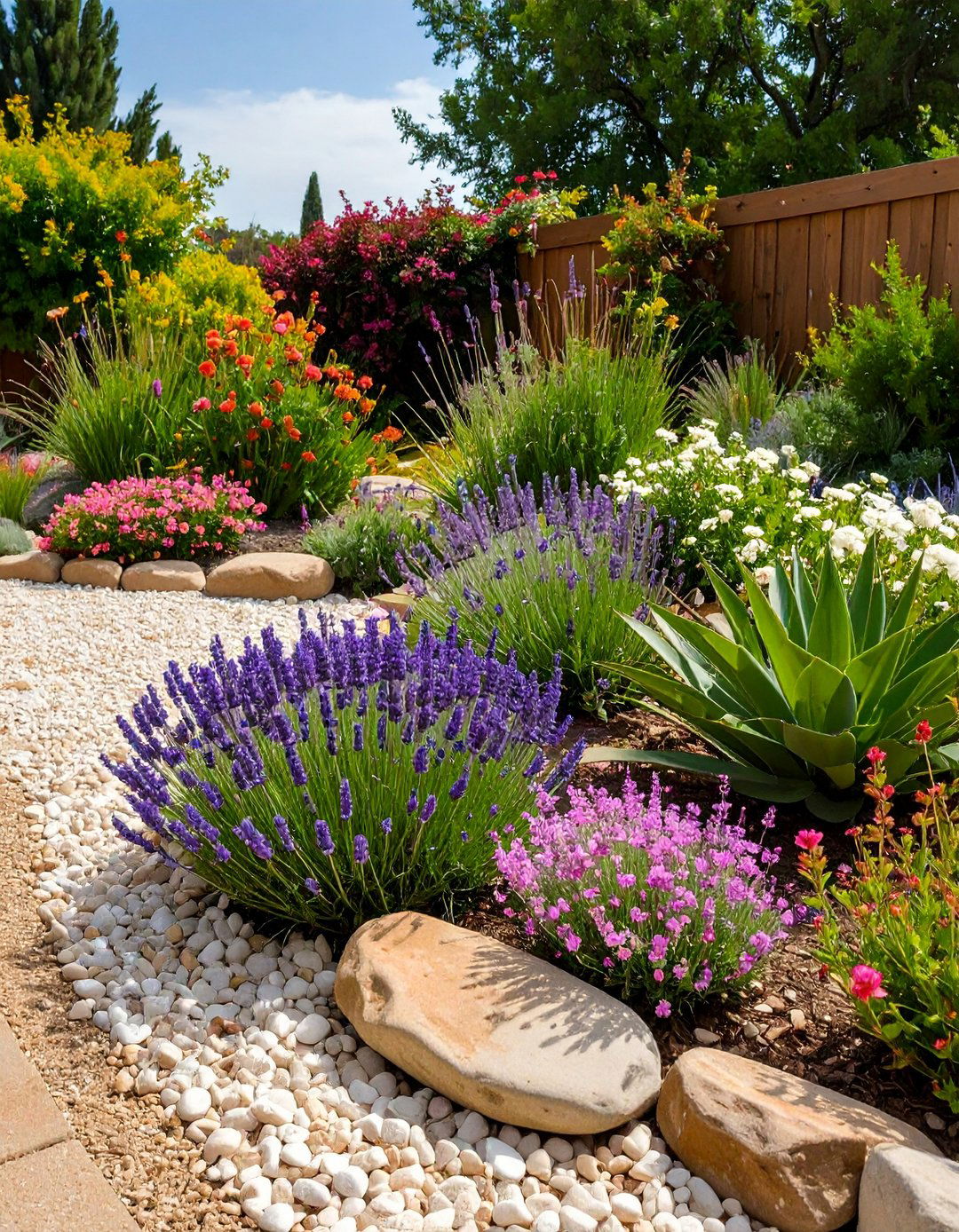
In regions facing water restrictions, a xeriscape native flower bed offers color without the hose. Drought-tested Mediterranean plants such as lavender, rock rose, and euphorbia thrive in gravelly soil and shrug off weeks of dryness once established. To mimic their natural terrain, remove existing turf, lay down eight centimeters of coarse builder’s sand and pea gravel, then incorporate a few shovels of compost only around young roots. Space plants wider than traditional beds so air can circulate, and top with a pea-sized stone mulch that stops evaporation but allows rain to percolate. Prune lightly after flowering to keep forms tidy; fertilizers are unnecessary.
10. Shade-Loving Woodland Flower Bed

A shade-loving woodland flower bed turns that dim corner under trees into a tranquil under-story glade. Recent plant lists spotlight perennials such as hellebore, hosta, and Virginia bluebells that illuminate low light with spring blossoms before leaf canopies fully close. Interplant them with textural groundcovers like wild ginger or barren strawberry to knit the soil and reduce weeding. Add a layer of shredded leaf mold each autumn to mimic forest litter and boost moisture retention; these species prefer cool, humus-rich conditions. A winding stepping-stone path invites close inspection of blooms and breaks foot traffic compaction around shallow roots over time.
11. Edible Flower Bed Blending Herbs and Blooms
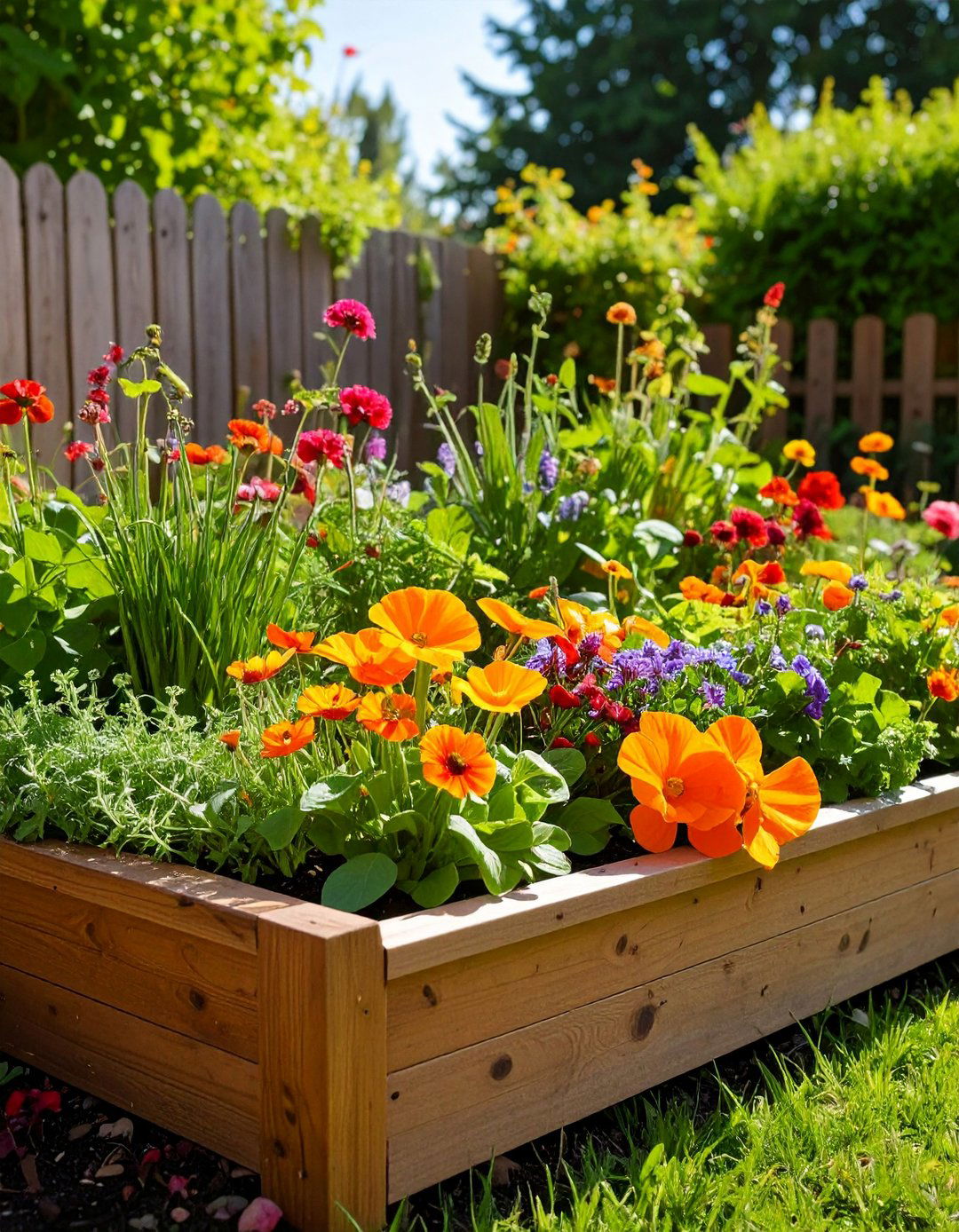
An edible flower bed lets you garnish plates straight from the garden while still dazzling the eye. Classic cottage herbs such as chives, calendula, and nasturtium mingle naturally with ornamentals, supplying petals for salads, peppery leaves for sandwiches, and nectar for hoverflies that control aphids. Arrange taller rosemary and sage at the back to create a fragrant screen and tuck low thyme between stepping stones to release aroma underfoot. Avoid synthetic pesticides so flowers remain safe to eat, and harvest regularly to encourage more blossoms. Label each edible with small slate markers to remind guests what they can taste happily.
12. Vertical Living-Wall Flower Bed
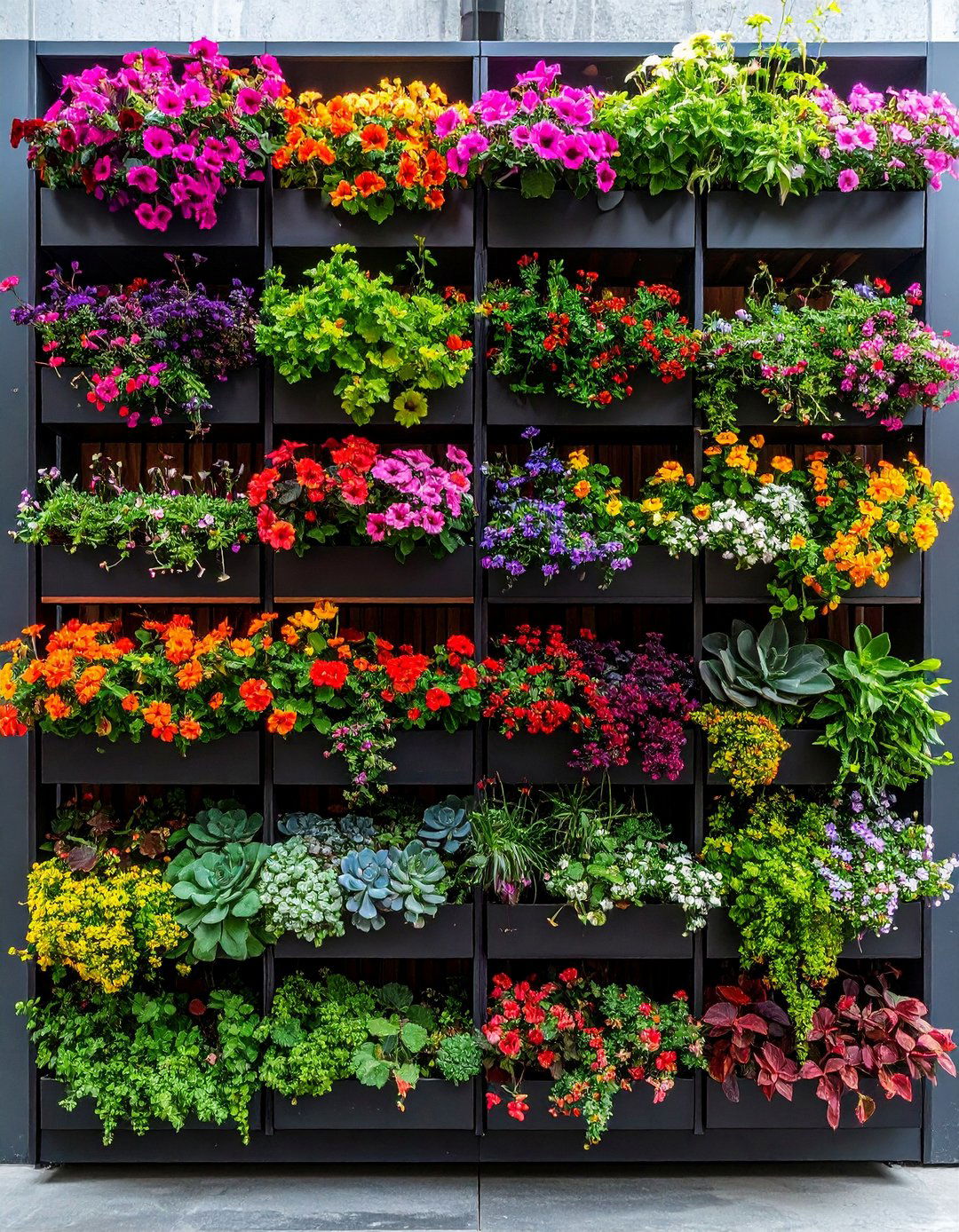
When ground space is scarce, a vertical living-wall flower bed turns a bare facade into a blooming mural. Modular tray systems hold twice as much soil as older pockets, giving roots insulation from heat and allowing trailing cascades of petunias or coral bells to drape effortlessly. Contemporary frames arrive pre-lined with irrigation channels, so maintenance involves little more than topping up a reservoir every few days in midsummer. Combine upright ferns for structure at eye level, mid-tier begonias for color, and succulents near the top where evaporation is highest. Keep fertilizer dilute; enclosed planters concentrate salts quickly if left unchecked.
13. Metal-Edged Modern Flower Bed
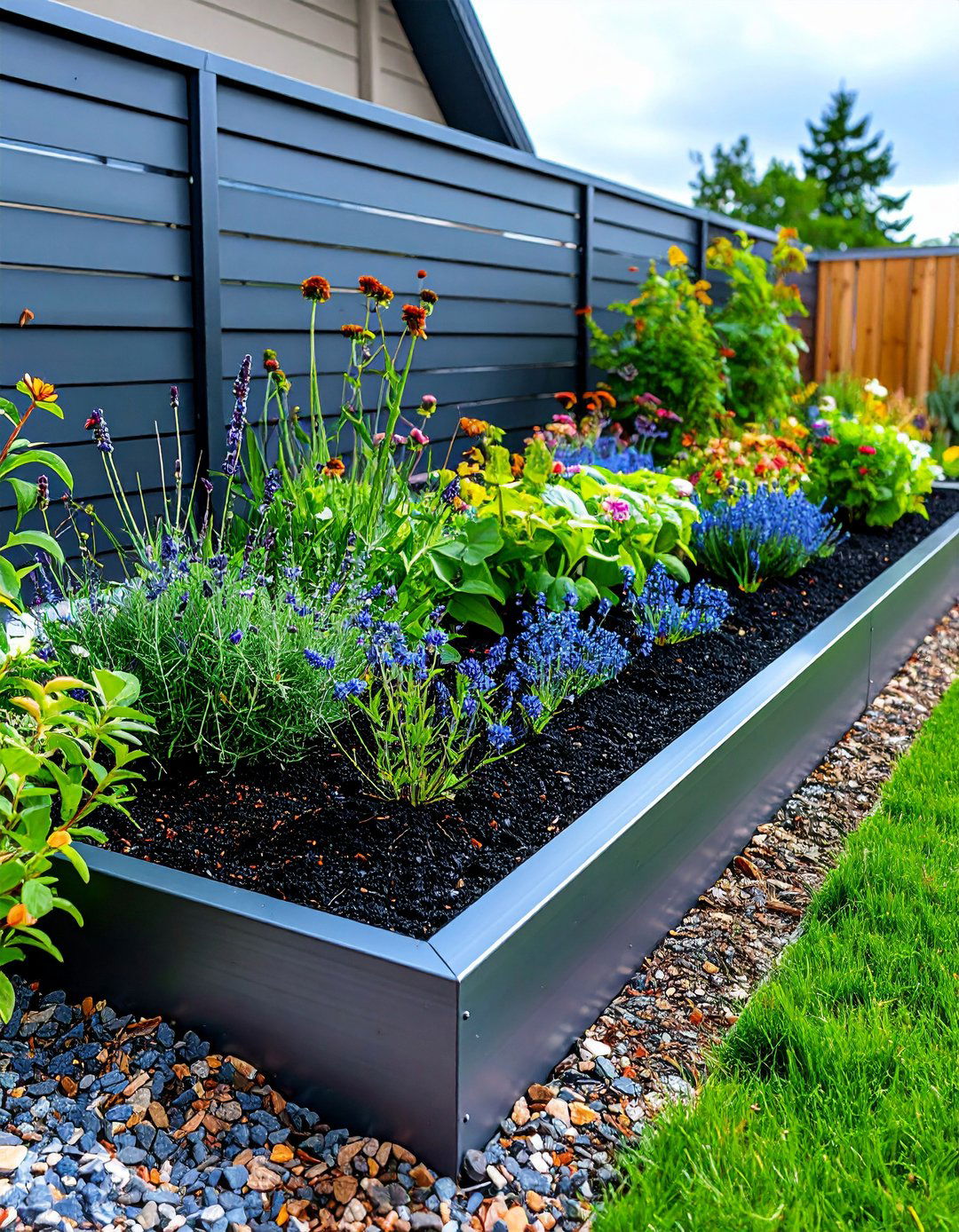
Sleek metal edging gives a modern flower bed the crisp lines that make soft blooms look curated rather than chaotic. Designers report that powder-coated steel sheets resist corrosion and allow tight radiuses, letting you create sweeping curves or geometric angles without the bulk of timber. Thinner profiles disappear beneath low groundcovers so plants seem to rise directly from the lawn, yet the barrier still stops invasive roots from wandering. New landscape trends highlight brushed aluminium or corten rust finishes that complement minimalist architecture while lasting decades. Secure strips with rebar stakes driven below grade, backfill firmly, and top the bed with contrasting charcoal compost to emphasize the silhouette.
14. Mediterranean Gravel Flower Bed for Sun-Baked Sites
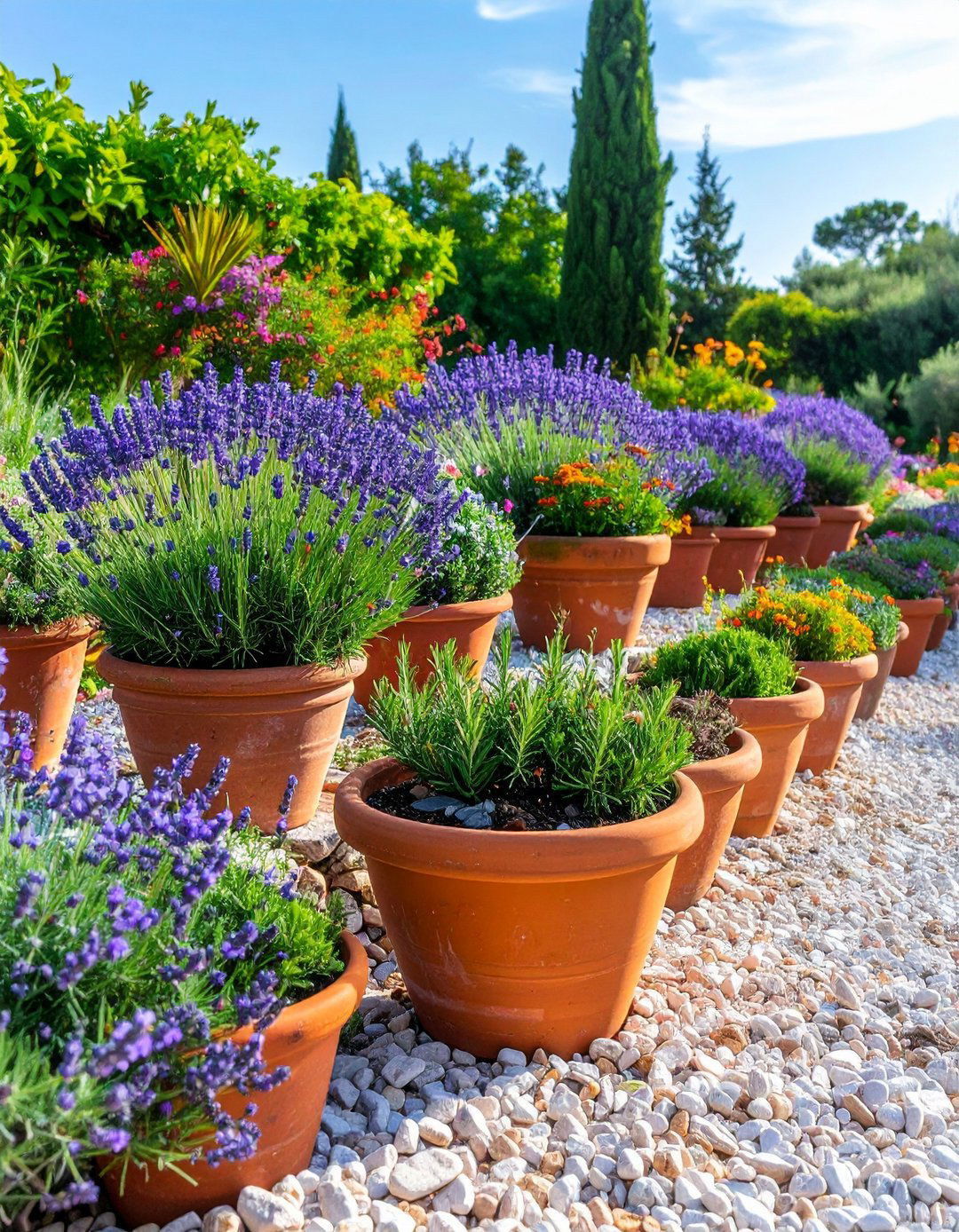
A Mediterranean gravel flower bed captures the sun-soaked character of Greek courtyards yet fits easily into temperate gardens facing hotter summers. Start with a five-centimeter layer of sharp gravel over permeable membrane, then add aromatic evergreens—lavender, rosemary, and teucrium—spaced so their mounded forms stay distinct. Sprinkle drought-proof accents such as euphorbia or rockrose between them for seasonal pops of color. Recent trend pieces highlight terracotta pots and whitewashed stones as inexpensive props that reinforce the Aegean vibe and bounce light onto silver foliage. Because the gravel acts as mulch, watering needs plummet; a fortnightly deep soak in high summer is usually ample. Top-dress yearly with fresh grit to suppress weeds.
15. Bee-Lawn Patch within a Flower Bed
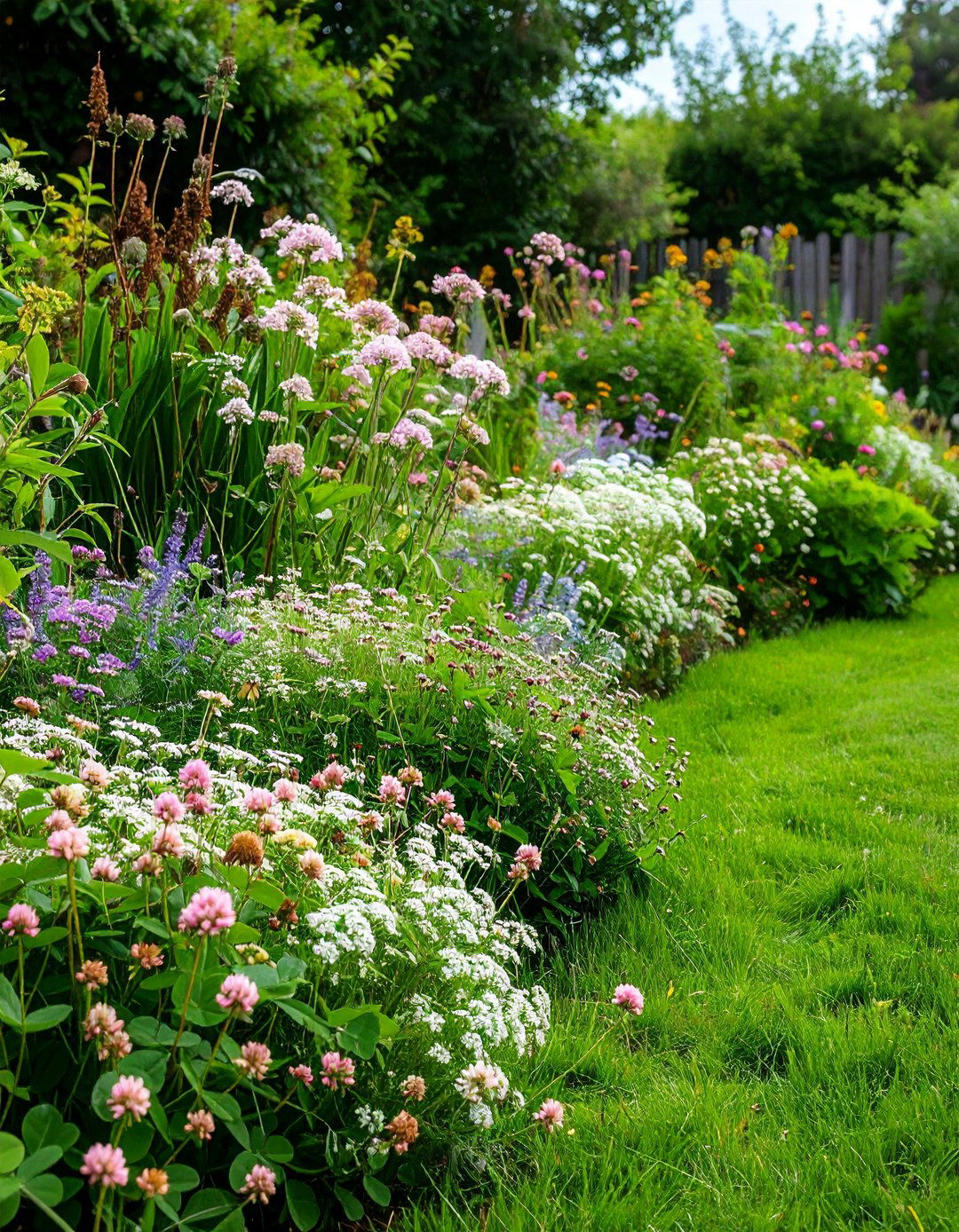
Transform a sunny strip of turf at the bed’s edge into a bee-lawn flower bed patch that merges low grasses and tiny blooms. Research from pollinator programs shows mixes of fine fescue, white clover, and self-heal support over fifty bee species while needing less mowing and fertilizer than conventional lawns. Start by scalping the grass, overseeding with a specialized blend, and keeping it moist until seedlings root; then mow only every two to three weeks at a height above seven centimeters. Allow flowers to bloom fully before each cut so nectar is available, and leave clippings in place to recycle nutrients.
16. Children’s Sensory Flower Bed of Touch and Aroma

A children’s sensory flower bed invites little hands and noses to explore the garden safely. Specialists recommend combining velvety lamb’s-ear, lemon-scented geranium, and rustling fountain grass so every sense is engaged from sight to sound. Place stepping stones between clumps so kids can approach without trampling stems, and keep poisonous plants out entirely. Guides to sensory gardens stress the value of arranging plants at toddler height and staggering bloom times so something new greets each visit. Add a tactile element like a sandpit edge or water bowl nearby, and encourage gentle touching to build respect for living things from childhood.
17. Container-Cluster Flower Bed for Flexible Design
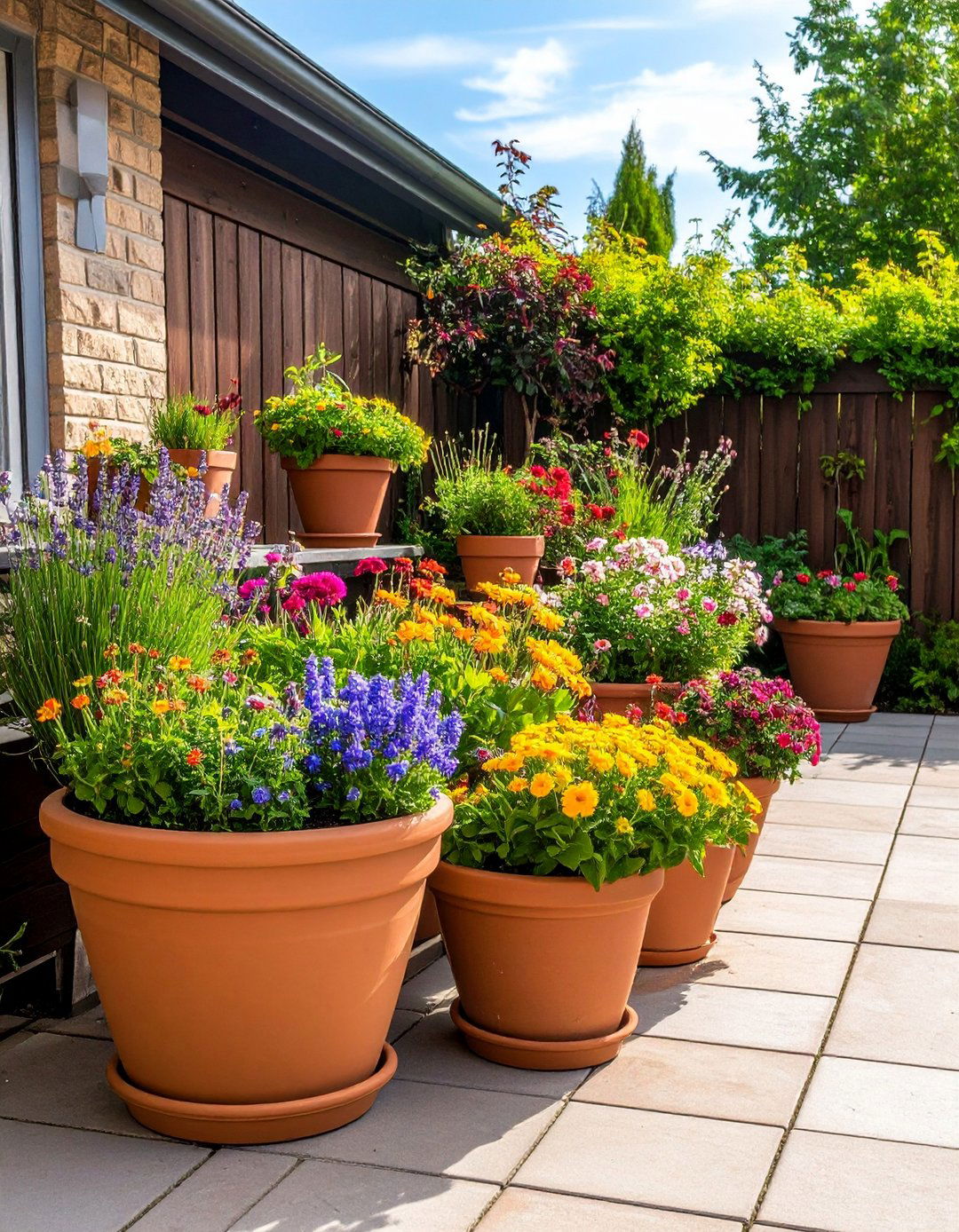
A container-cluster flower bed groups assorted pots so densely they read as one sculptural planting, perfect for renters or patios with paving. Container-design guides suggest playing with pot heights—low bowls, waist-tall urns, wall-mounted boxes—to create a tiered display without permanent digging. Because each vessel has its own soil, you can fine-tune drainage for water-loving impatiens in shade pots and cactus mix for sun-baked geraniums just steps away. Trending planter round-ups highlight lightweight resin urns and coir-lined window boxes that cost less than dinner yet deliver curb appeal instantly. Shuffle containers seasonally, or wheel them indoors ahead of frost for year-round color.
18. Seasonal-Rotation Flower Bed for Continual Bloom
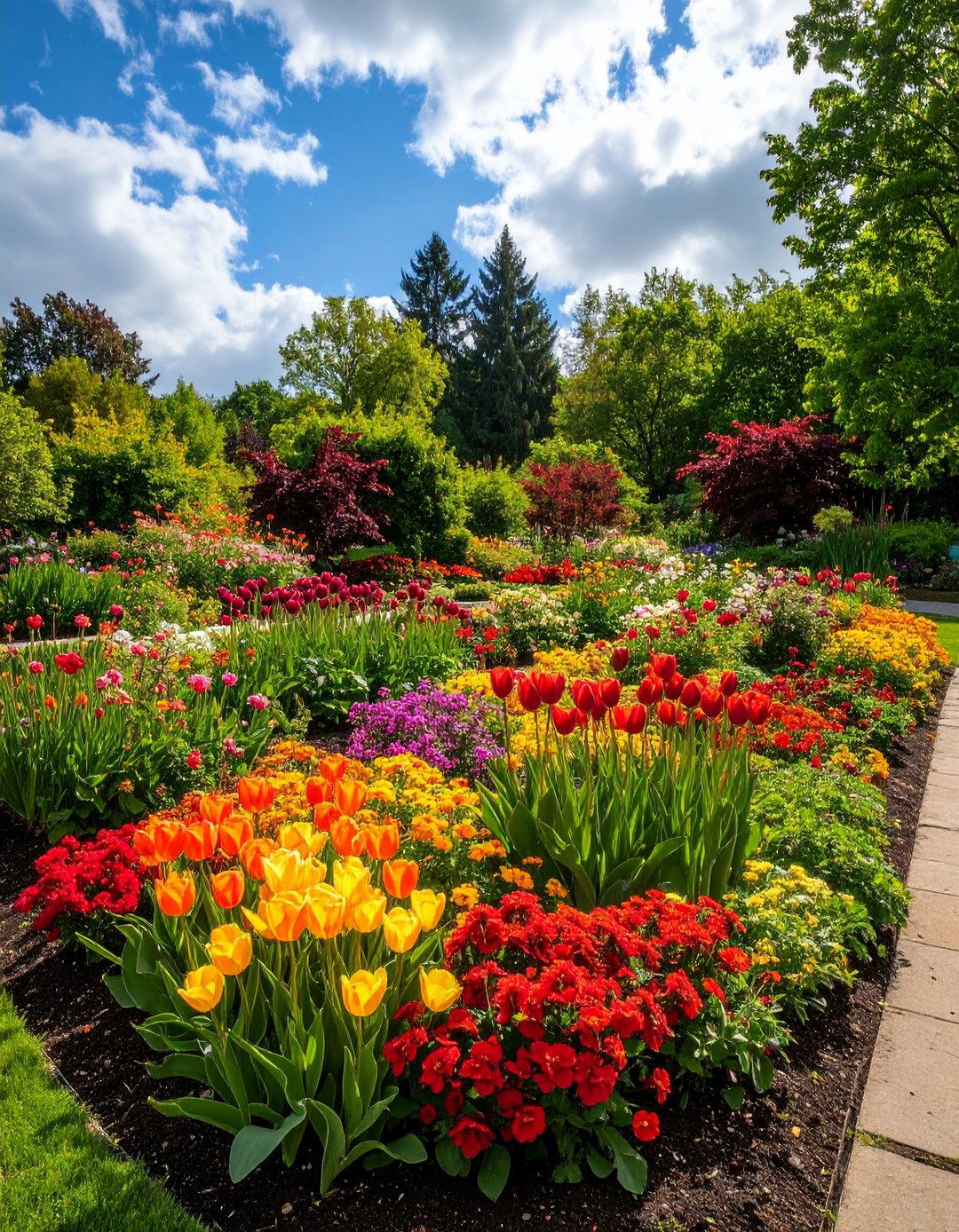
With a seasonal-rotation flower bed you never face a tired gap, because bulbs and annuals hand off bloom duty like runners in a relay. Garden layout guides advise planting fall-set tulips and daffodils beneath warm-season annuals; as petals drop, you simply lift the bulb foliage and slip in zinnias, marigolds, or cosmos without re-digging the bed. Experts on annual rotation note that heat lovers keep color flowing until first frost and can be replaced by ornamental cabbages for winter texture. Keep a stash of compost nearby to backfill after each swap, and water deeply once to settle roots each time.
19. Zen Minimalist Flower Bed with Grasses
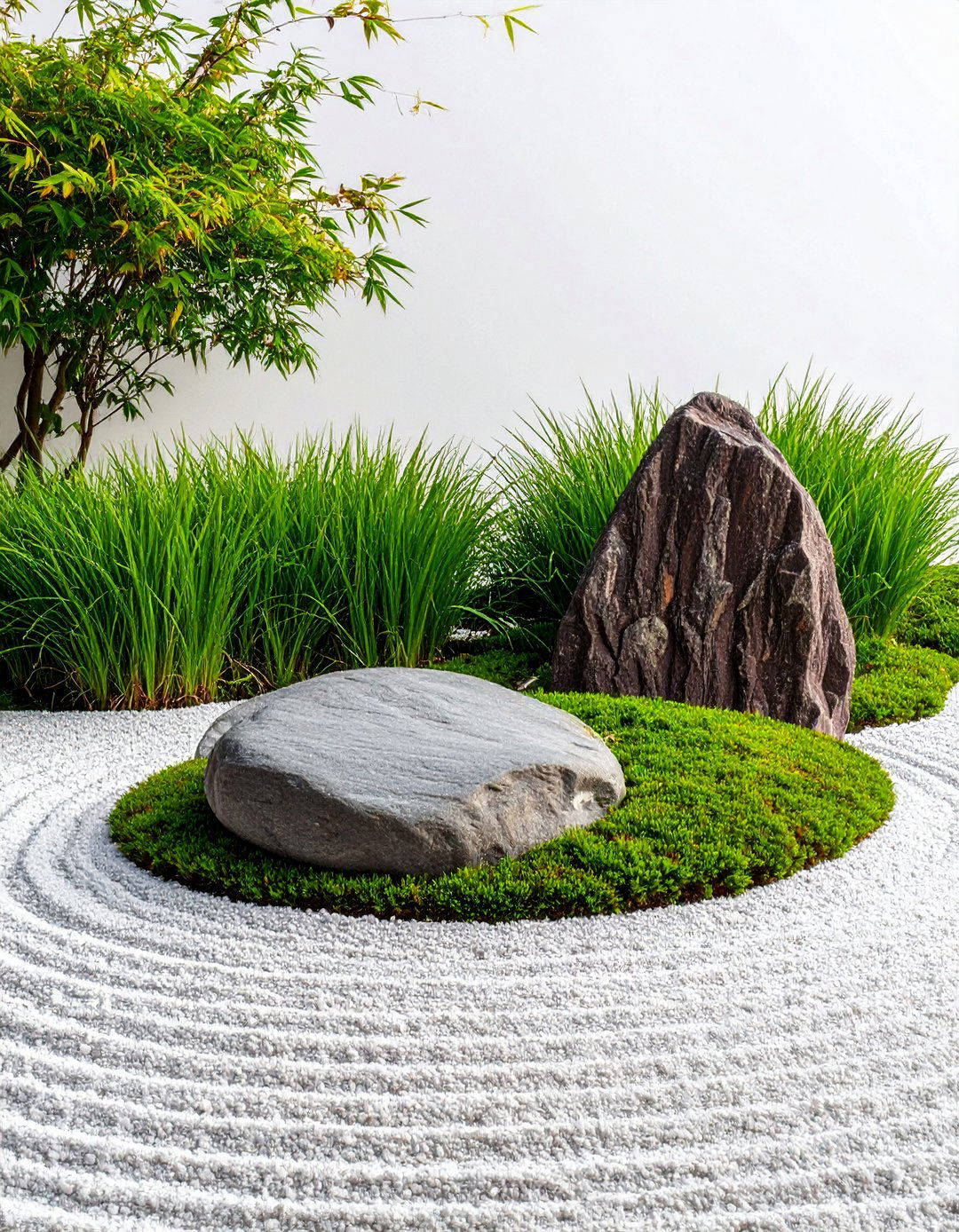
A Zen minimalist flower bed demonstrates the power of restraint: few plant species, muted colors, and plenty of breathing space. Japanese garden notes emphasize using textural elements such as Hakone grass or dwarf mondo in broad drifts to represent flowing water, punctuated by a single sculptural boulder or pruned maple. Contemporary minimalist design advice further recommends limiting materials—perhaps concrete, gravel, and weathered wood—and repeating them so the eye rests instead of searches. Rake gravel into slow curves around clumps each week; the ritual maintains order and replaces deadheading. Evening uplights angled upward through grass blades create moving shadows that invite quiet contemplation.
20. Coastal Wind-Tolerant Flower Bed
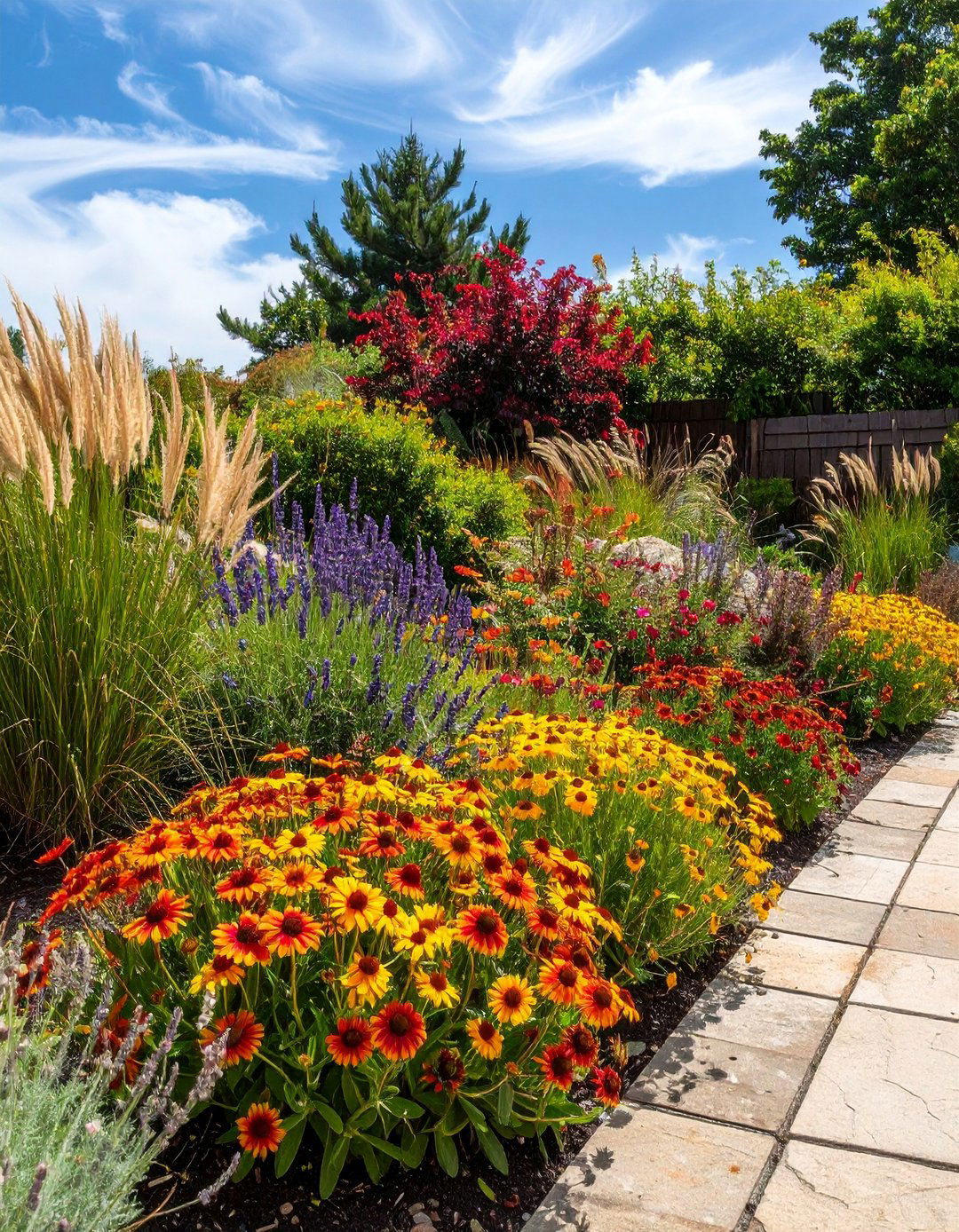
Ocean breezes and salty spray demand a tough coastal flower bed that bends rather than breaks. Lists of salt-tolerant plants recommend Gaillardia, sea oats, and red-hot poker for colour, backed by dwarf juniper and creeping lilyturf to anchor sandy soil and filter wind. Garden advisors suggest positioning the tallest shrubs on the seaward side to act as a living windbreak, with lavender or rosemary forming a fragrant inner hedge that thrives on silica-rich air. Amend the bed with organic matter to hold limited nutrients, and water deeply during establishment; after roots extend, rainfall usually suffices even through hot summers there.
Conclusion:
Experimentation is the secret ingredient in every memorable flower bed, and the twenty ideas above prove there is a solution for every climate, budget, and style. Whether you lift soil in sleek metal frames, sculpt gravel into Mediterranean waves, or simply let clover bloom between stepping stones, each approach layers ecological value onto beauty. By matching plants to light, moisture, and purpose, maintenance shrinks and wildlife returns. The result is an outdoor room that nourishes pollinators, calms human visitors, and thrives far beyond a single season—no matter which concept you choose to sow next.



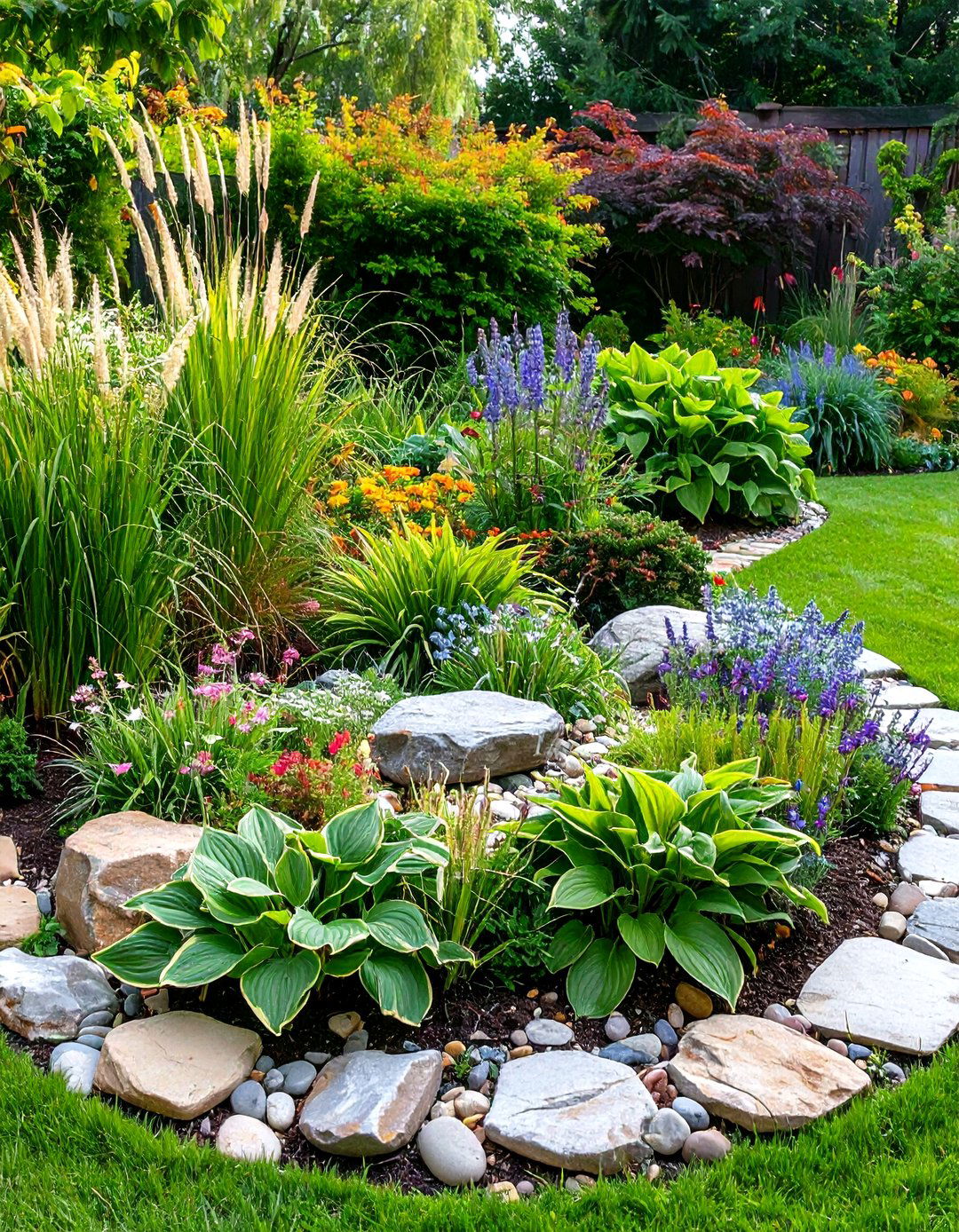
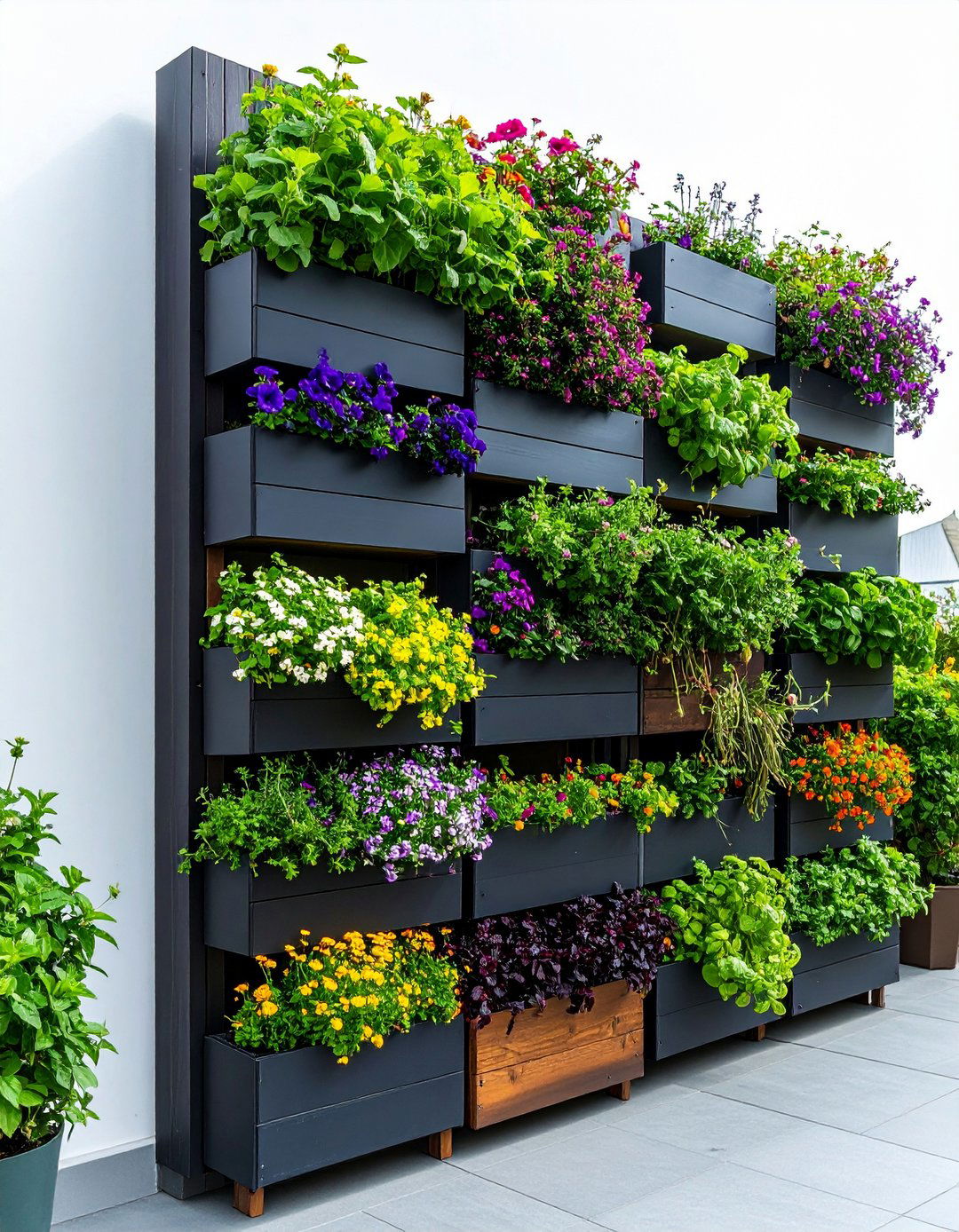
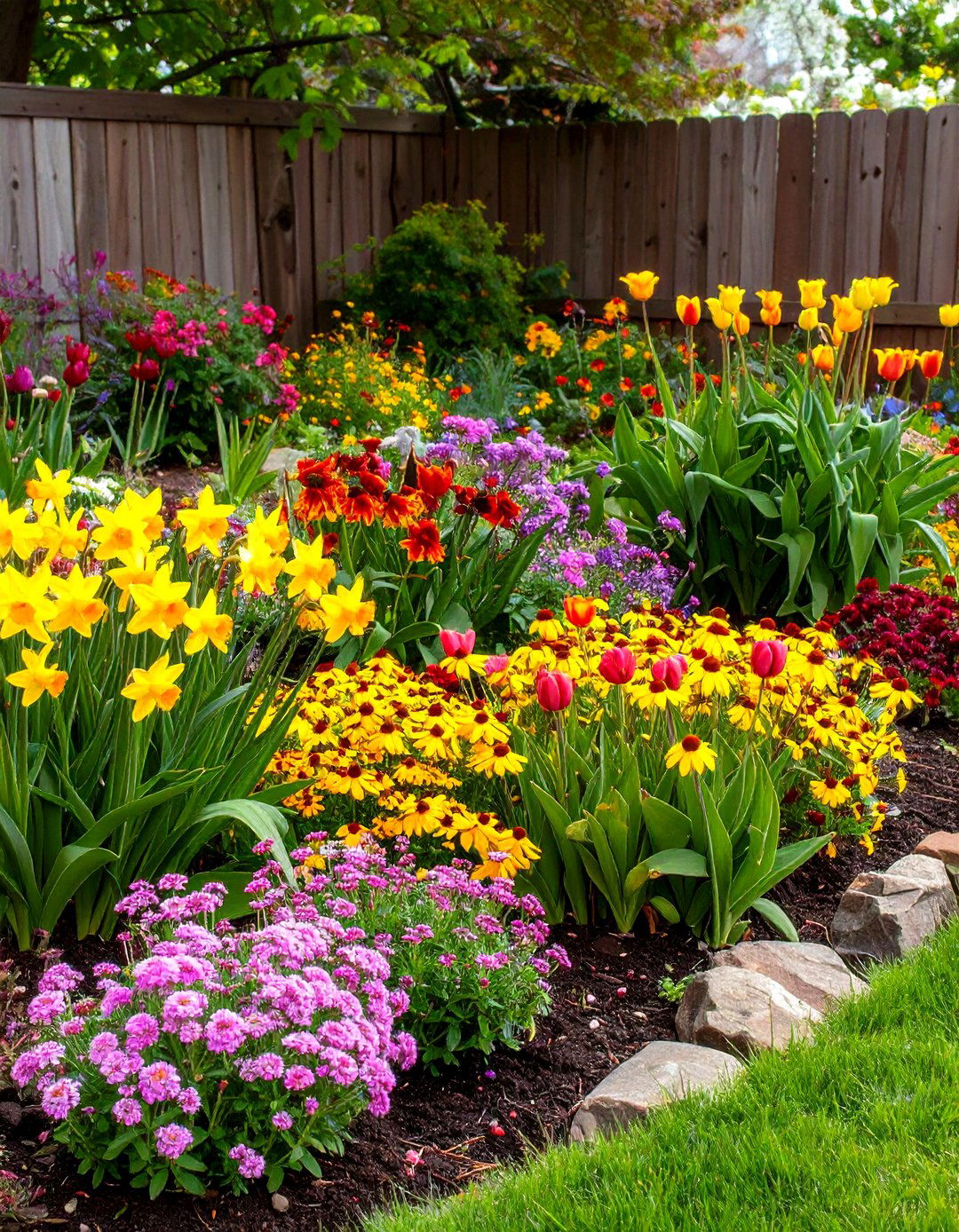
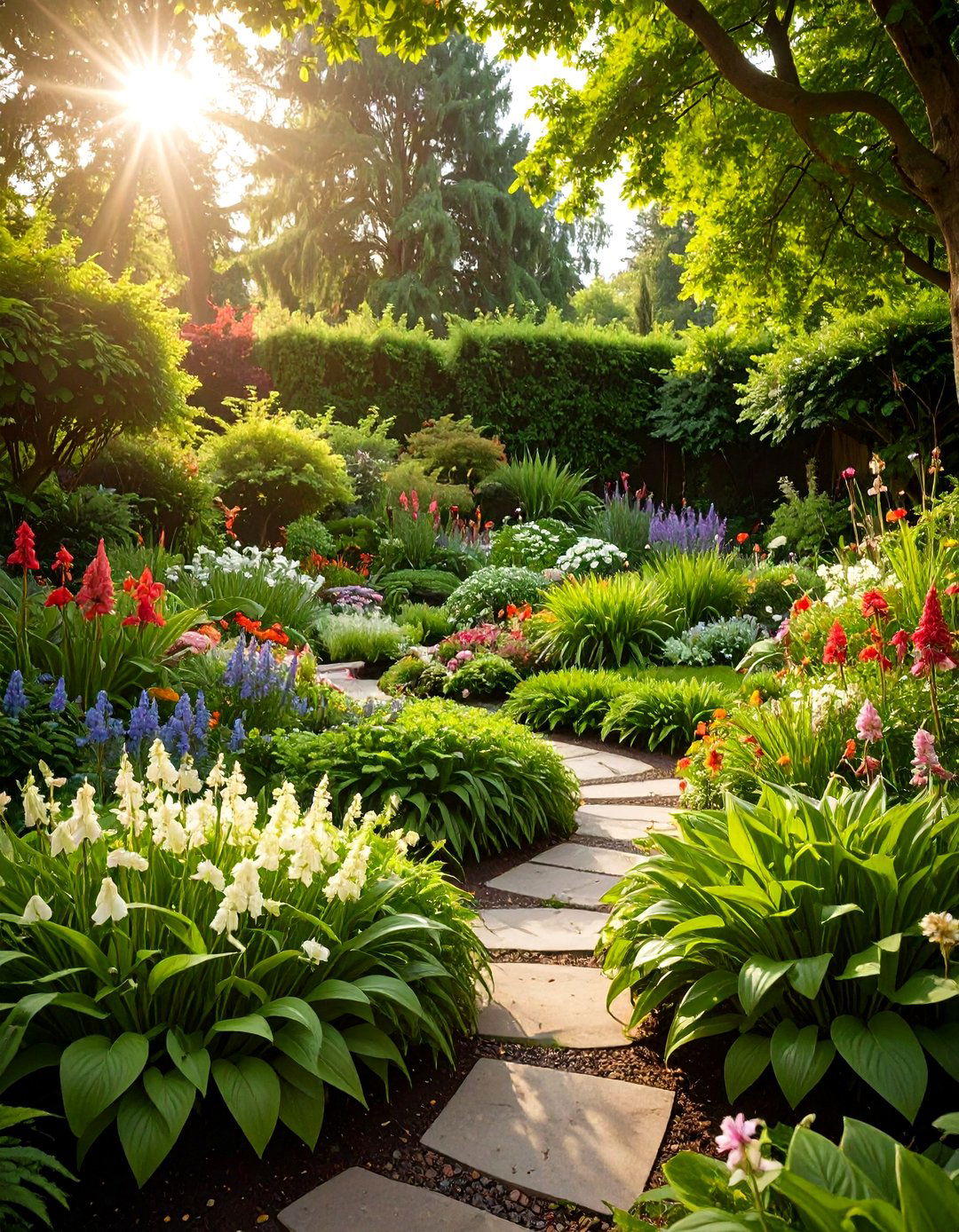

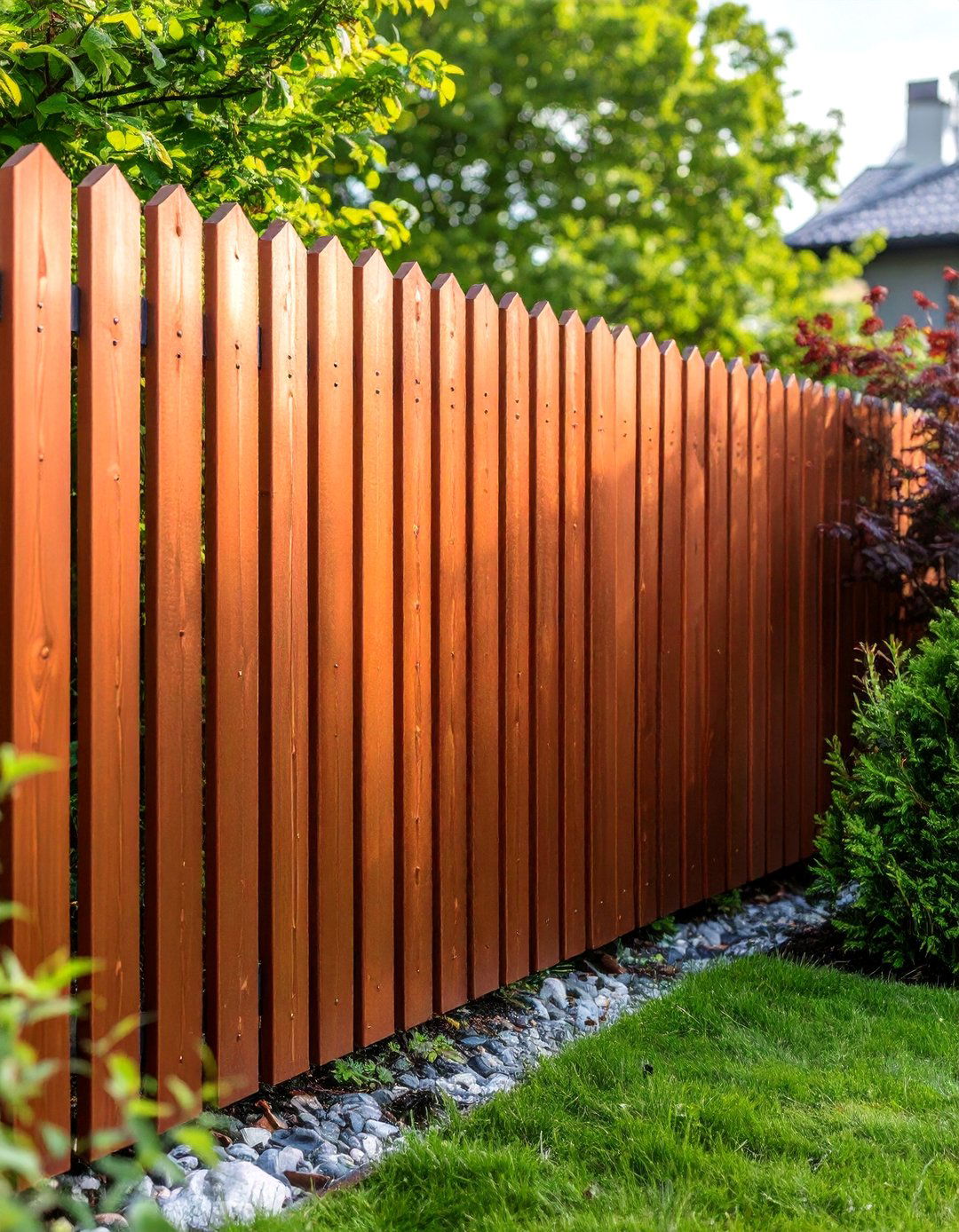
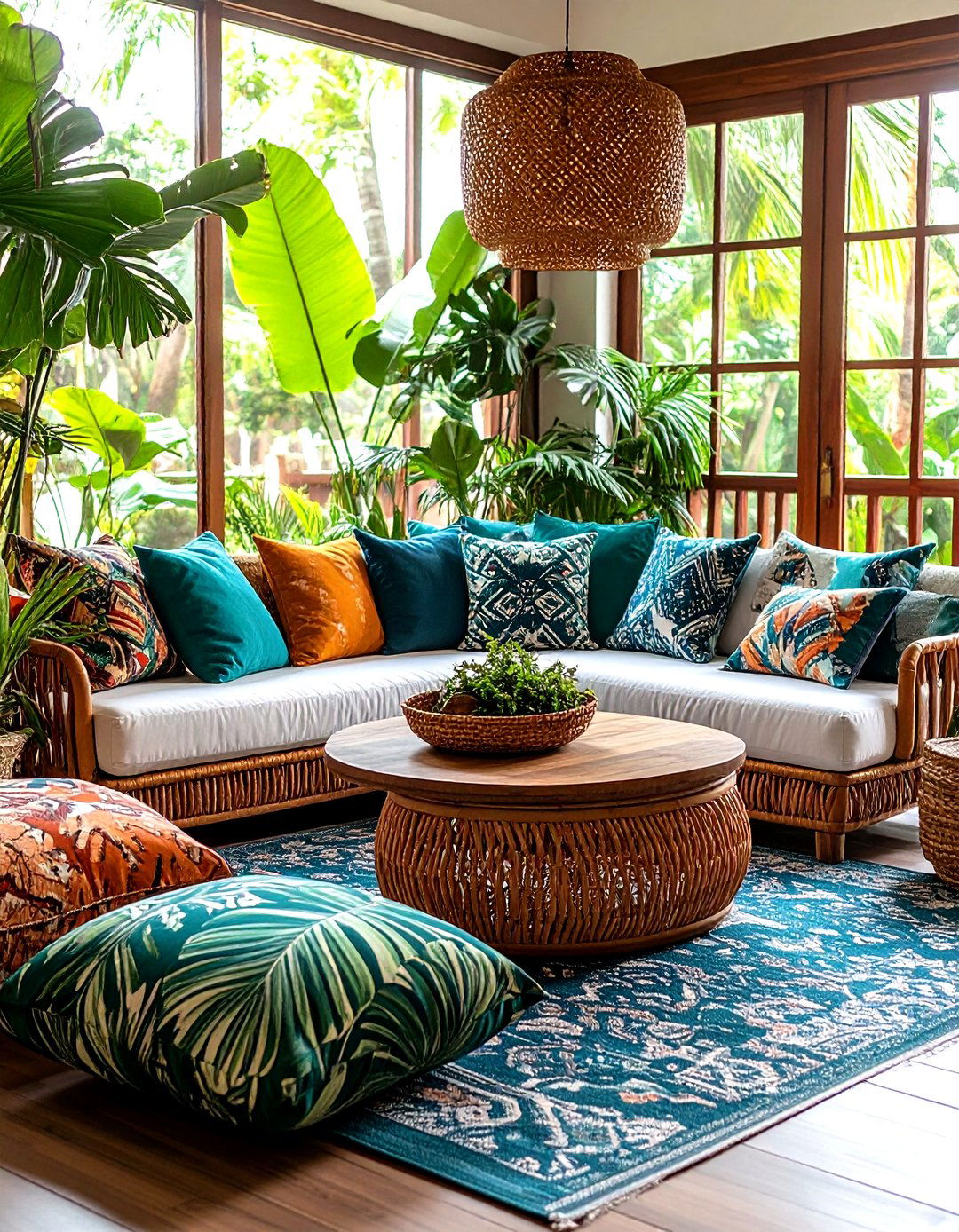

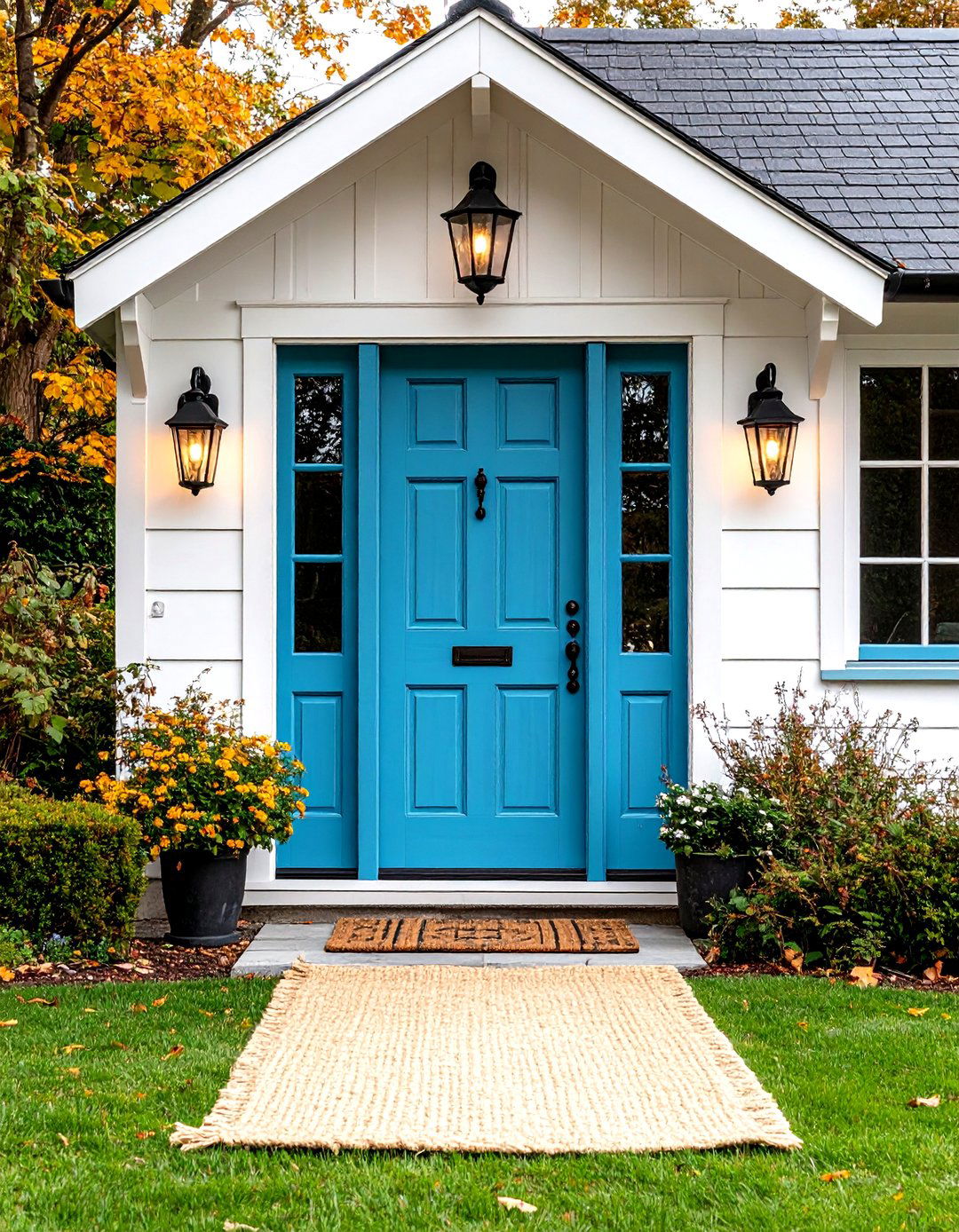



Leave a Reply